Many bee colonies can often defend themselves from predators. But not all bee predators are the same. Some animals that eat bees are more successful than others.
Bees can sometimes deter these animals but many times their numbers are reduced by the following predators.
Table of Contents
What Eats Bees?
Some animals and insects are particularly interested in bees. While other animals might also eat bees, the following are first interested in bees or their hives.
1. Bee-eaters
Bee-eaters are small adapted birds that are efficient at killing and eating bees. These small colorful birds are common in regions of Africa and Asia.
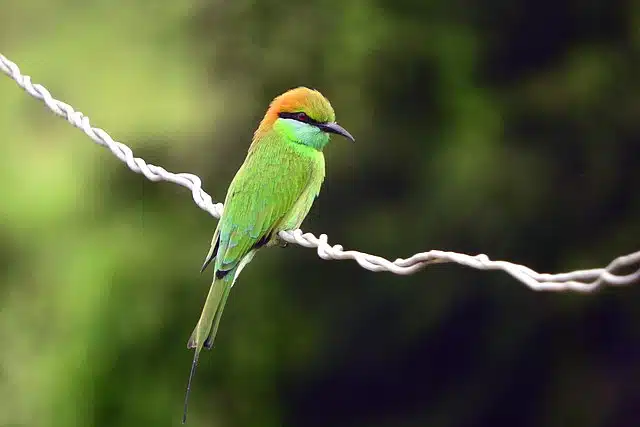
Their hunting style is very efficient leaving many bees with no means of escape. These small birds known as bee-eaters grab bees while flying. They then proceed to smash bees on hard surfaces such as rock to remove their stinger and possibly even the venom in the bee.
These birds only eat bees after removing their stinger.
2. Shrike
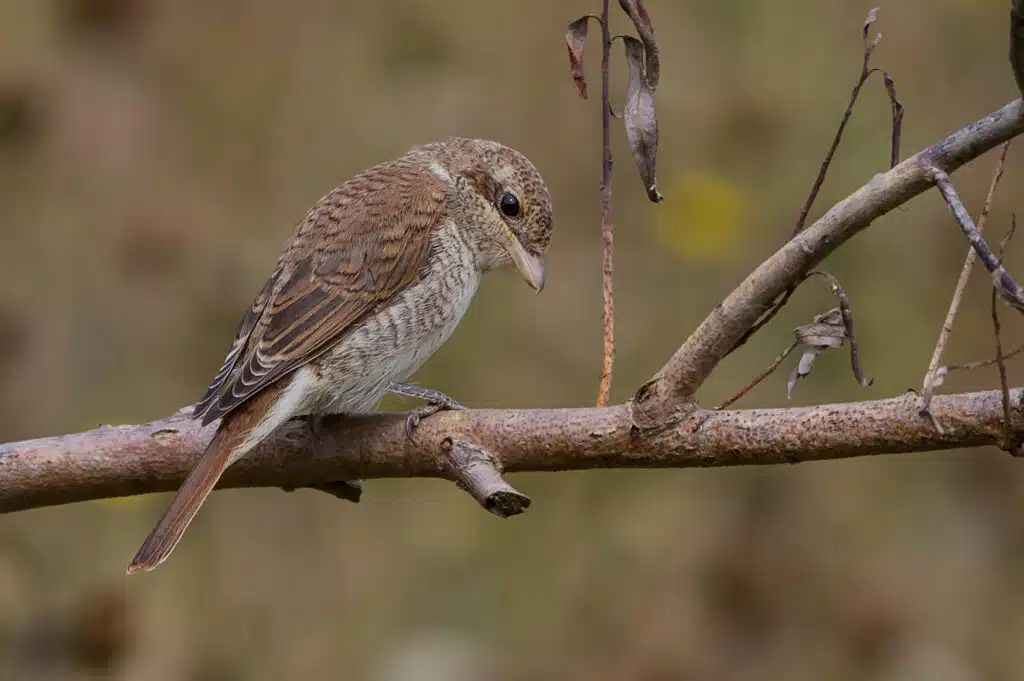
Shrikes are small birds of the Laniidae family. They have some of the most complex bee-eating habits of all animals that eat bees.
They impale bees in thorns or any other sharp objects so they can eat the bees in small chunks and even return later to continue eating them.
This habit is believed to be formed by Shrikes for eating toxic grasshoppers. The Luber grasshopper is impaled and left for 2 days before Shrikes return to consume it. In this interval, the toxicity of the grasshopper has worn off.
This method of impaling insects is successfully used by Shrikes against bees. However, neither Bee-eaters nor Shrikes can considerably affect bee colony population numbers.
3. Flycatcher
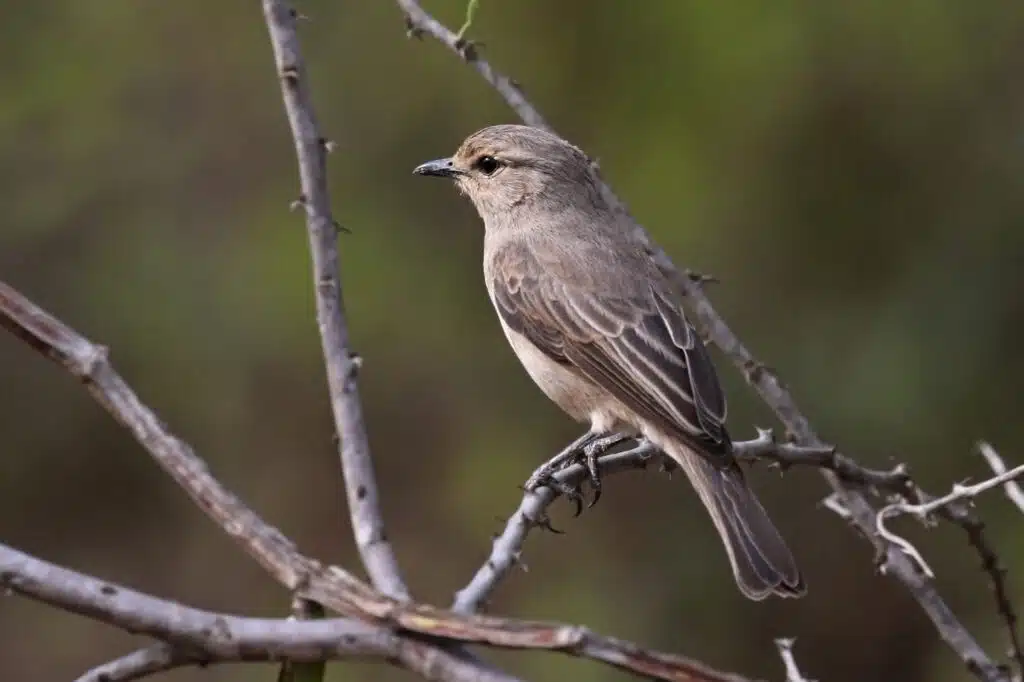
Flycatchers are opportunistic birds that eat bees. They are mostly known for eating flies but they don’t step down given the chance to eat a bee, particularly when it sees bees flying. These birds like to capture bees in their flight.
4. Honey Buzzard
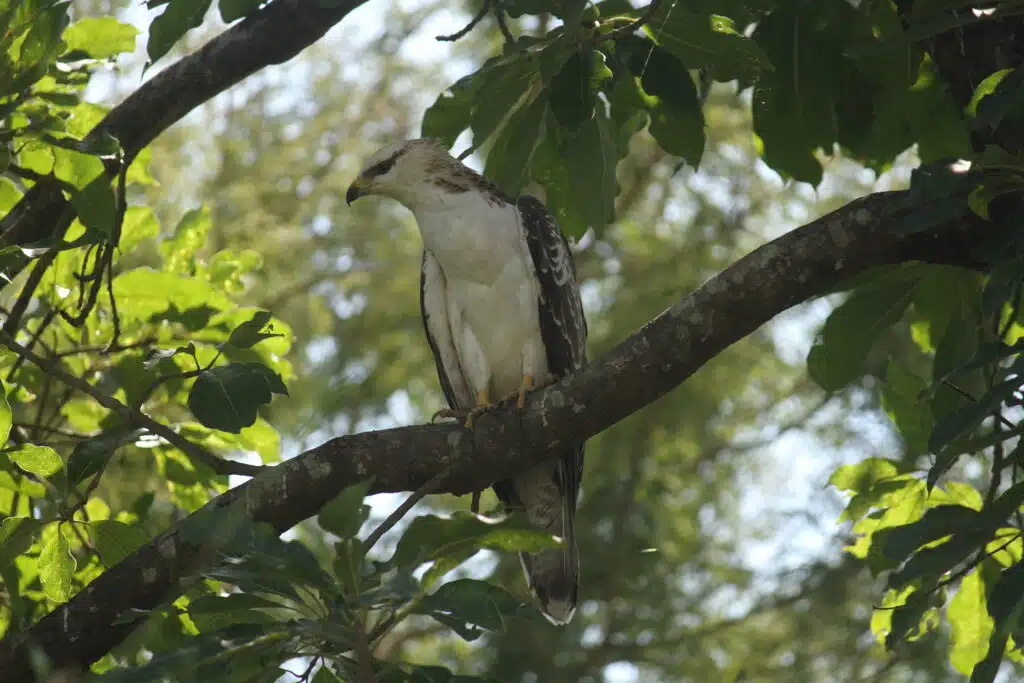
Honey Buzzards love honey and bees. These bids attack bee colonies eating comb, honey, and bee larva. They are well aware bees will attack and sting back. However, the Honey Buzzard is fully adapted to resist bee stings.
5. Greater honeyguide
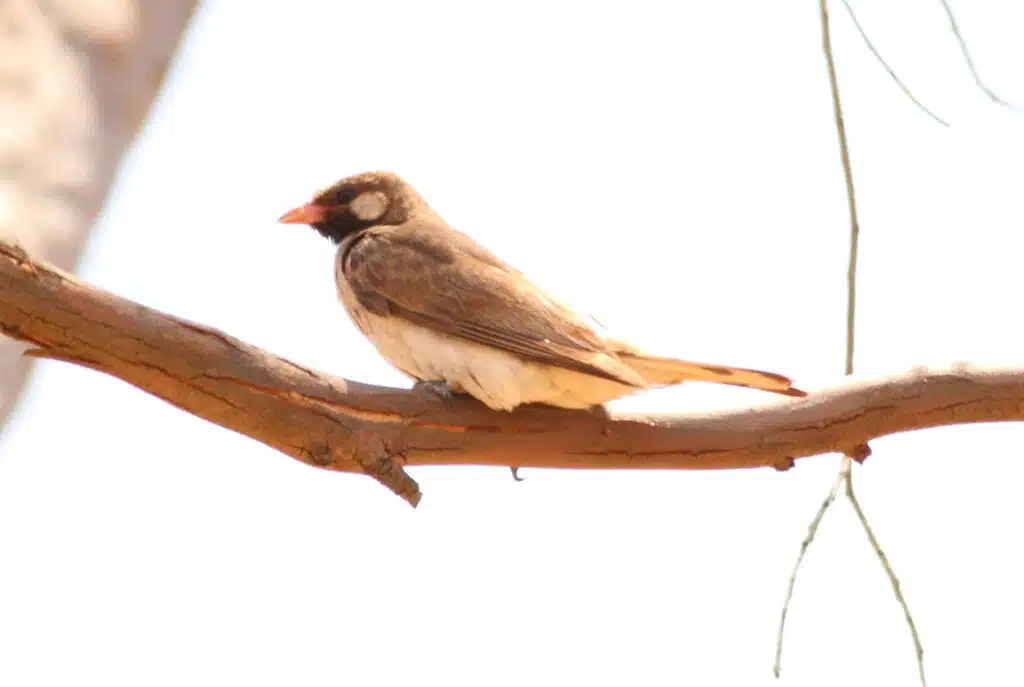
The Greater honeyguide is a type of bird that actively hunts bees. It’s an efficient predator entering beehives early in the morning. Once inside, the Greater honeyguide feeds on bees, larva, and waxworms. Even more, this bird eats and digests beeswax.
There are only a few other birds that have this digestive system capability.
Humans have always used Greater honeyguide birds to discover new bee colonies of wild bees.
6. Badgers
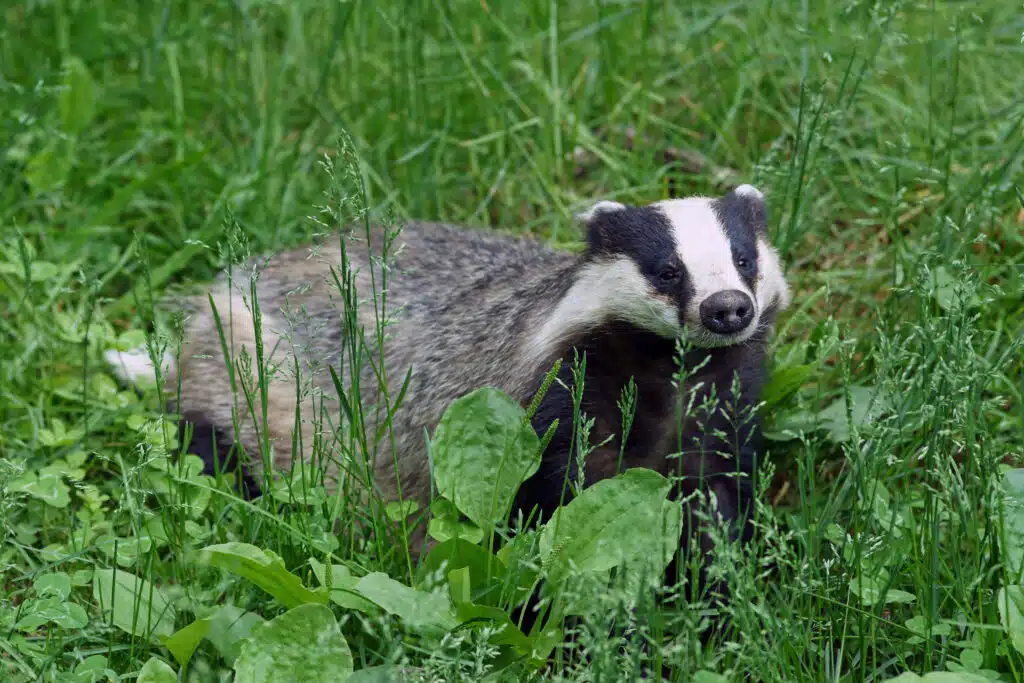
Badgers are nocturnal creates that eat bees. They live next to water sources rarely wandering off too much from them. However, they will actively pursue eating bees and honey.
Badgers enter bee nests at night, similarly to the Greater honeyguide. While badgers eat bees, they also eat other bee predators which don’t make them as harmful as other animals. For example, badgers eat wasps that kill bees.
7. Skunks
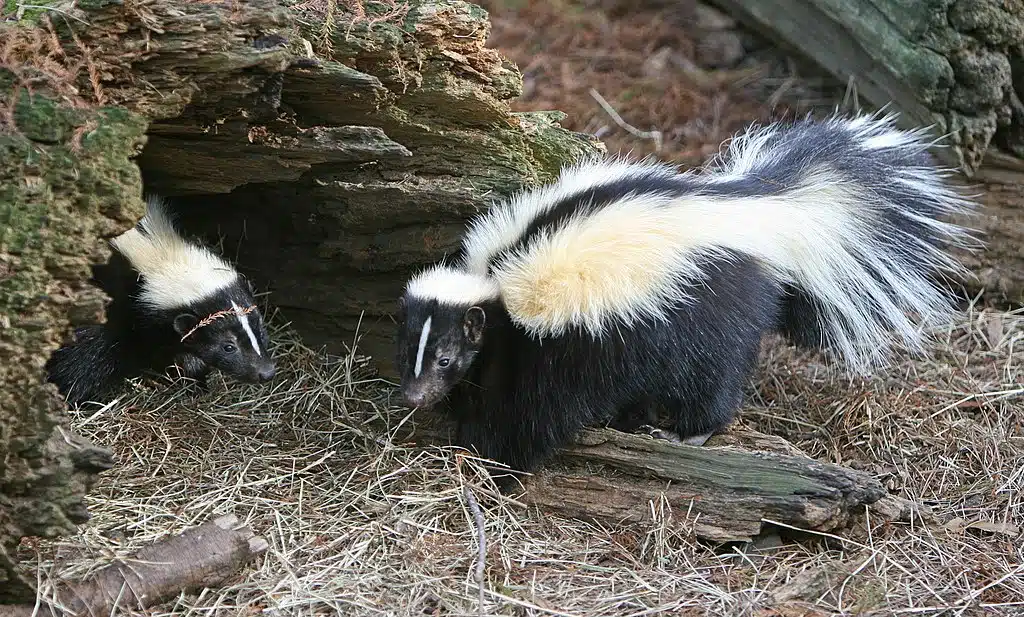
Skunks are animals that only eat insects. These insectivorous animals chew up bees and only eat their liquid moist parts spitting solid parts.
Skunks have clear methods of attracting bees out of the nest since they can’t easily get inside. They use wall scratching techniques to bring out bees that are interested in the sound. This offers them the best chance to try and catch as many bees as possible.
8. Bears
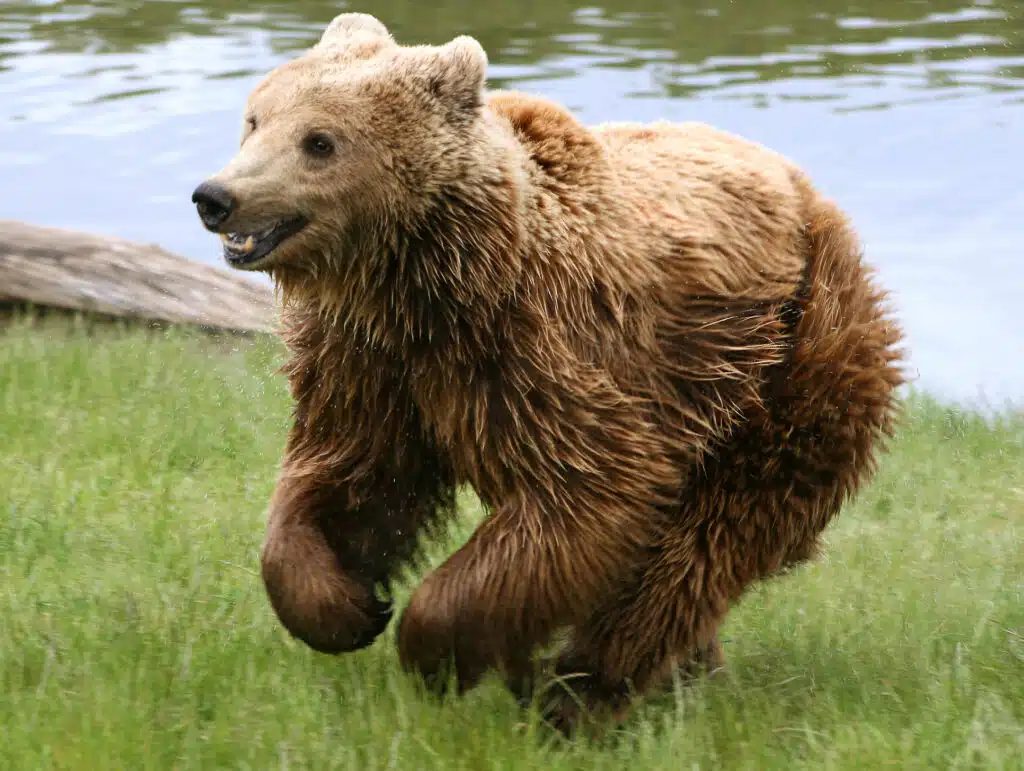
Bears are some of the most common animals that eat bees. Brown and black bears are particularly interested in bees as they often share the same habitat.
These bears are attracted to the honey in the bee’s nest. However, they can also eat bees and larva since these provide a source of protein during the feeding season.
Bears are some of the most destructive bee predators. They often destroy the entire nest or beehive. They are normally difficult to keep out by beekeepers. Electric fences are the best protection method against bears for most beekeepers.
9. Hive Beetles
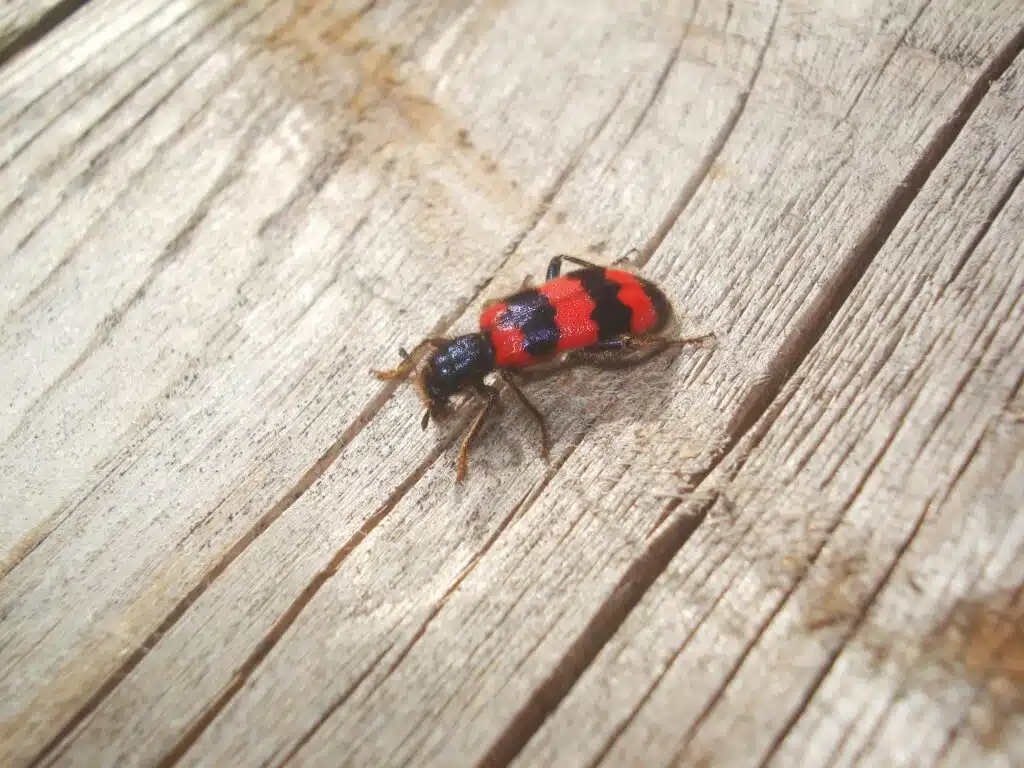
This small beetle is a major cause of concern in hives across Africa and North America. Its infestation causes problems for honey, wax, and pollen inside the hive.
Unlike other animals that eat bees such as birds, Hove beetles tend to essentially destroy the entire hive.
Hive beetles are also responsible for a widespread phenomenon known as colony collapse disorder. The destructive presence of Hive beetles prompts many bees (often more than 50%) to leave the hive.
A hive that is still packed with honey and pollen is left behind only with the queen and a few other worker bees and larva. This phenomenon causes major losses in apiculture around the world.
10. Crab Spiders

Crab spiders are species of spiders that look and move similar to crabs. However, they can pounce on flies and other insects such as bees when within their range. These spiders can sting and paralyze bees either consuming them on the spot or later.
11. Beewolves
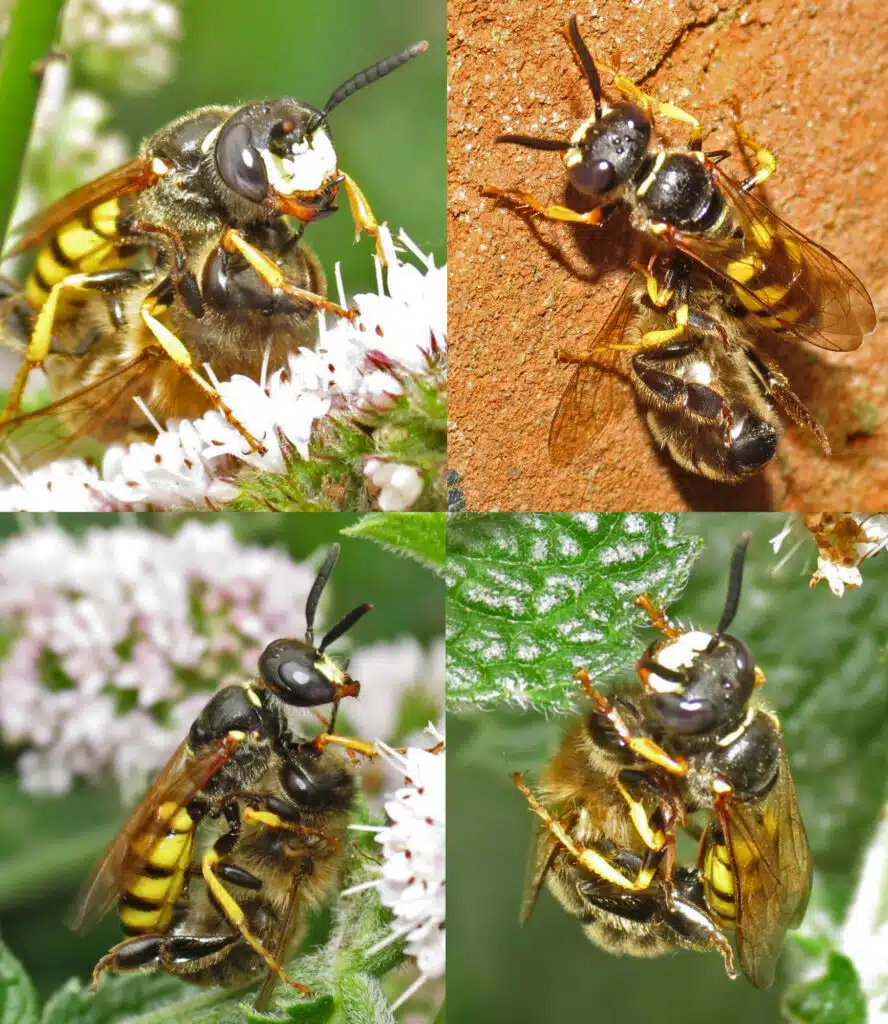
Beewolves are a type of bee-killing wasps. These wasps are known for killing many types of bees. They typically sting bees in soft body parts paralyzing them on the spot.
Beewolves are wasps that live in the ground. They carry paralyzed bees back in their underground tunnels to consume later.
12. Yellowjackets
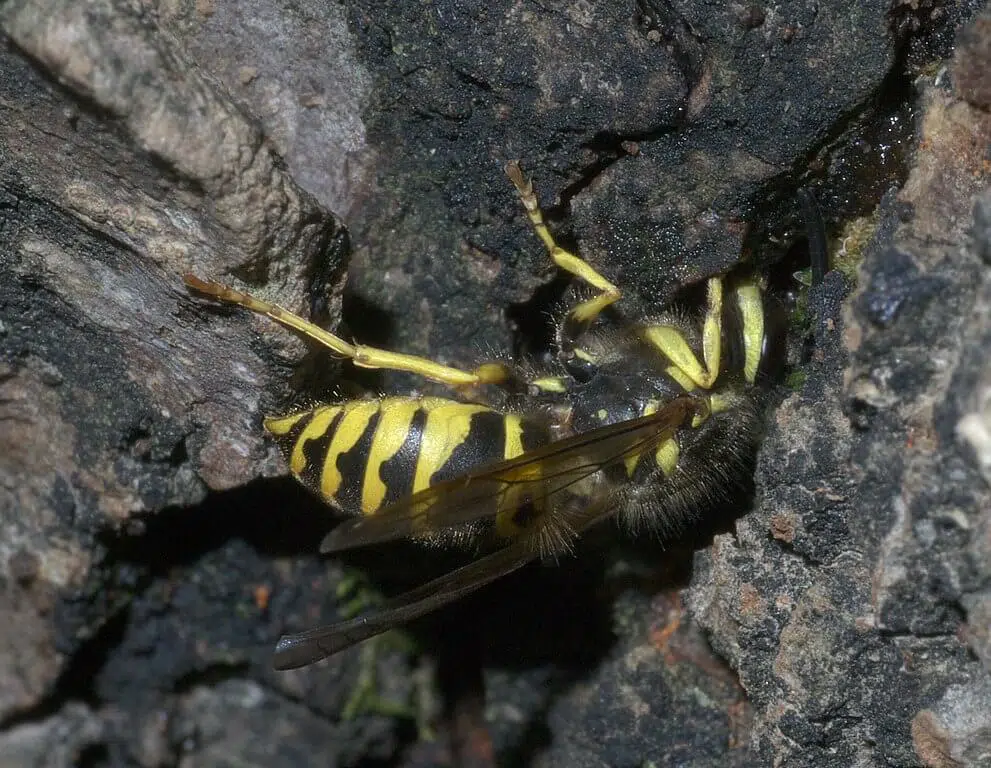
Yellowjackets are known for killing many types of insects. Bees are among their favorites. These wasps are efficient at ripping bees apart.
Some part of the bee is eaten on the spot. Other parts of the bee are transported and stored for later consumption.
Yellowjacket wasps also frequently enter hives. They consume honey and pollen. These wasps also eat bee larva reducing bee colony sizes.
13. Robber Flies
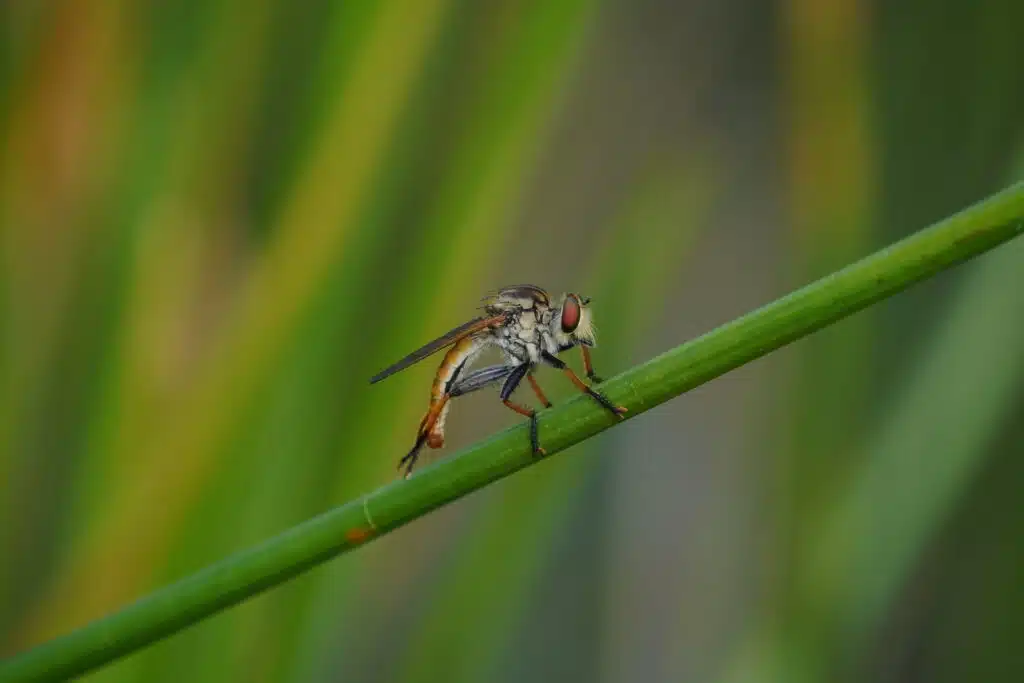
Robber flies are common all around the world. They are seen as a common bee predator.
Robber flies only eat small bees in most situations. However, an increasing number of reports show Robber flies can also eat adult bees, wasps, and moths larger in size.
14. Dragonflies
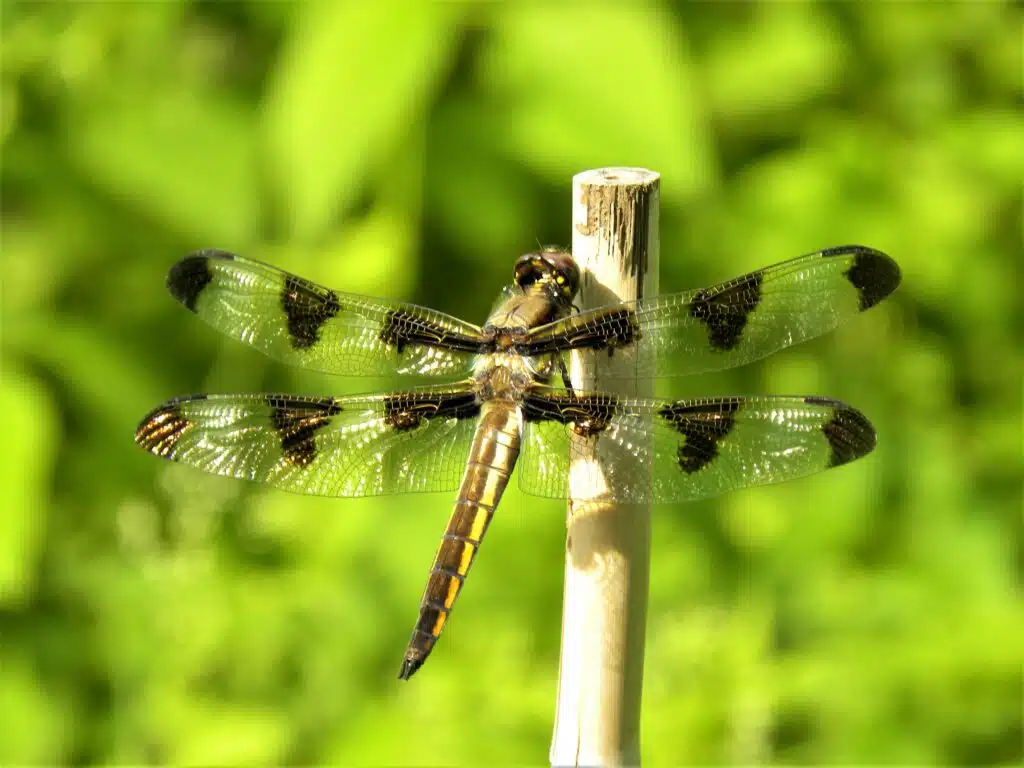
Dragonflies consume bees similarly to Robber flies. These insects are known for overpowering bees given the chance.
Dragonflies have stronger jaws than bees. They also have sharp teeth that help them devour bees quickly.
Dragonflies only share the same habitat with bees that also prefer to live next to water sources. Since Dragonflies mate in water, they can fly far away which makes them a minor threat for beekeepers.
15. Praying Mantis
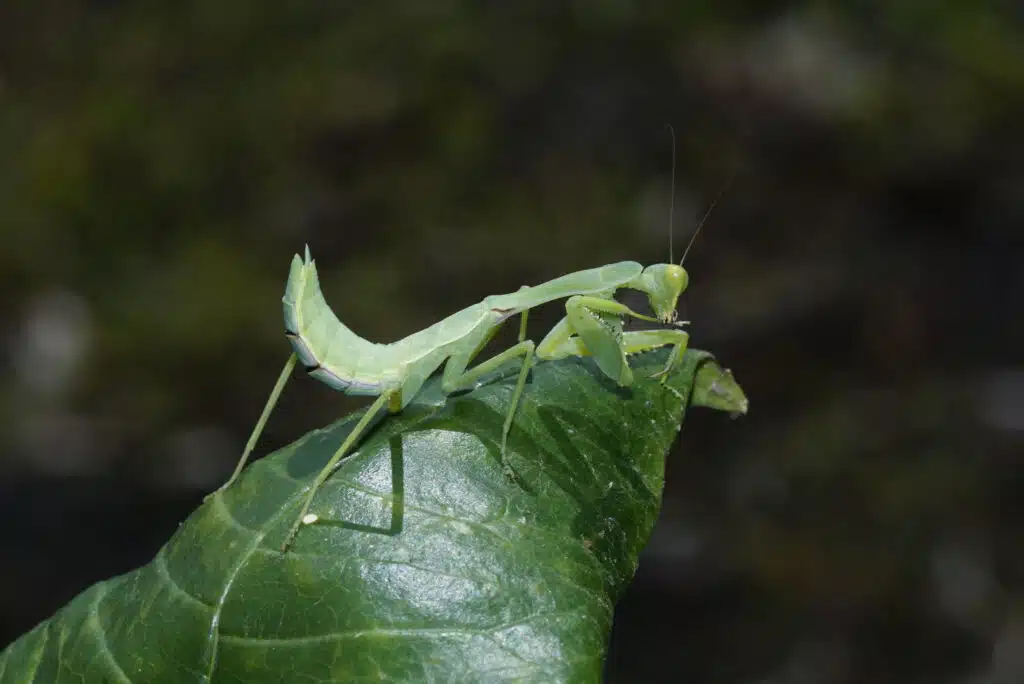
Praying Mantis are known to specifically target bees and wasps. These predators are known to increase their body sizes considerably throughout their lives. There’s a direct correlation between the final size of the Praying Mantis adult and the number of bees and wasps it catches and eats.
16. Toads
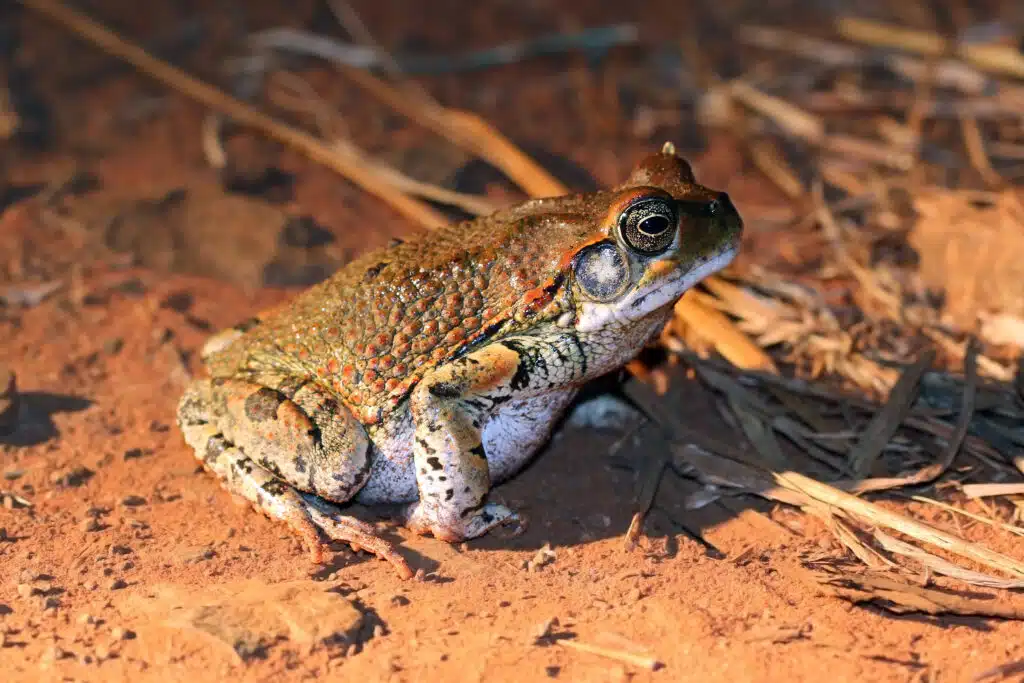
Toads are specifically interested in targeting bees living in populated apiaries. Some of the apiaries with 30 to 40 hives are seen as the ideal target for hungry toads in periods of scarce food sources.
Toads sit right at the entrance of these hives essentially capturing one or multiple bees as they enter or exit the hive.
Toads are less interested in moving around wild bees as they’re harder to catch. Small electrified fences are often installed around apiaries to keep toads away.
How Do Bees Defend Themselves?
Bees have multiple defense mechanisms. They use these mechanisms against other bees (mainly from other colonies), invertebrate predators, and against animals that steal honey.
Stinger
The stinger is one of the first lines of defense for bees. This stinger easily detaches from the bee. Since it’s barbed (only the queen bee doesn’t have a barbed stinger) it attaches easily to the skin of people or other animals. The stinger is also used as a medium for bee venom.
Alarm pheromones
Alarm pheromones are released by patrolling bees and bees inside the nest when there’s an immediate threat such as a large animal in the area. This signals all bees to react in time and save the nest.
Thermoballing
The term thermo-balling is used to describe Japanese bees that work together to create hot air around a predatory wasp. Bees work together with their wings to increase air temperature around a single wasp. High air temperature eventually kills the wasp.
Biting
Bees can bite. This form of defense is very common against bees from other colonies as well as against wasps. Biting is a bit inefficient when compared to the bite of Dragonflies, especially against larger threats.
Venom
Bee venom contains a type of protein (apamin and melittin) which are responsible for the pain associated with the sting of bees. These proteins are also responsible for the inflammation symptoms following a sting.
Bee venom can be responsible for adverse immune system reactions in animals and humans.
Summary
Animals eat bees constantly. They eat their larva, honey, and even wax. Some animals only eat one or a few bees which makes them a reduced threat to a colony. Other animals destroy hives making them very dangerous to bees and bee colonies.
Birds, toads, wasps, and mammals are among the common animals that eat bees. Some of them eat bees entirely while others only eat the soft tissue parts of a bee’s body.
Further Reading: